|
|
|
 |
 |

 |
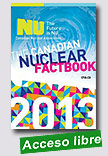 |
The Canadian Nuclear Factbook
Canadian Nuclear Association , 2013, 64 p.
The 2013 edition of the Canadian Nuclear Association’s nuclear energy fact book is now online and available for download. Canada and countries around the world are discussing energy matters like never before. The CNA’s nuclear handbook provides basic and factual material to contribute to decisions about the role of nuclear energy.
This book tells us about the history of nuclear power; the extent to which the technology is used worldwide; and its economic and |
environmental benefits. The accessible facts and graphics also show us how nuclear provides over 17% of Canada’s electricity with virtually no greenhouse gas emissions.
We also learn about how nuclear science and technology advances materials science, and about the crucial role of nuclear technology in modern medical imaging, diagnosis, and treatment.
Canada’s nuclear industry directly and indirectly employs over 60,000 Canadians. These jobs are long-term, high-quality, and well-paid with firms that make impressive investments in workforce development and in their communities.
Canadians who live and work in our host communities support our industry and value its contribution to their quality of life. We hope that you will too, and that this book will help to inform your understanding and that of your colleagues, family, friends,
students and professional contacts.
Find out more about nuclear energy — a reliable, affordable, and clean source of electricity
Extraído de: http://www.cna.ca/studies_reports/the-canadian-nuclear-factbook
|
 |
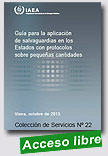 |
Guía para la Aplicación de Salvaguardias en los Estados con Protocolos sobre Pequeñas Cantidades
Colección de Servicios del OIEA, 2013, 118 p.
Esta Guía para la aplicación de salvaguardias en los Estados con protocolos sobre pequeñas cantidades (denominada en adelante “la Guía”) se ha preparado para los Estados con actividades nucleares mínimas o nulas que han concertado protocolos sobre pequeñas cantidades (PPC) a sus respectivos acuerdos de salvaguardias amplias (ASA) con el Organismo Internacional de Energía Atómica (OIEA). El documento INFCIRC/153 del OIEA, Estructura y contenido de los acuerdos |
entre los Estados y el Organismo requeridos en relación con el Tratado sobre la no proliferación de las armas nucleares (denominado en adelante “documento INFCIRC/153”) sienta las bases de esos ASA.
La Guía trata igualmente de las obligaciones de los Estados que han concertado protocolos adicionales basados en el documento del OIEA INFCIRC/540 (Corregido), Modelo de protocolo adicional al (a los) acuerdo(s) entre el (los) Estado(s) y el Organismo Internacional de Energía Atómica para la aplicación de salvaguardias (denominado en adelante “documento INFCIRC540”).
La Guía amplía la información contenida en el documento titulado Guidance for States Implementing Comprehensive Safeguards Agreements and Additional Protocols de marzo de 2012 (Colección de Servicios del OIEA No 21, denominado en adelante “documento SS21”).
Extraído de: http://www-pub.iaea.org/MTCD/Publications/PDF/SVS-22_S_web.pdf
|
 |
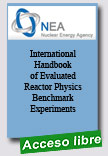 |
International Handbook of Evaluated Reactor Physics Benchmark Experiments (DVD)
Nuclear Energy Agency (NEA), March 2013, s. p.
The International Reactor Physics Experiments Evaluation
Project (IRPhEP) was launched in 1999 by the Organisation for Economic Co-operation and Development (OECD) Nuclear Energy Agency (NEA) Nuclear Science Committee (NSC). While co-ordination and administration of the IRPhEP is managed at the international level by the NEA, each participating country is responsible for the administration, technical direction and priorities of the project within their respective countries. The
|
information and data included in this handbook are available to NEA member countries, to all contributing countries and to others on a case-by-case basis.
This handbook contains reactor physics benchmark specifications that have been derived from experiments performed at various nuclear facilities around the world. The benchmark specifications are intended for use by reactor designers, safety analysts and nuclear data evaluators to validate calculation techniques and data. Example calculations are presented; they do not, however, constitute validation or endorsement of the codes or cross-section data.
The 2013 edition of the International Handbook of Evaluated Reactor Physics Benchmark Experiments contains data from 130 experimental series performed at 47 reactor facilities. One hundred twenty-six of the 130 evaluations are published as approved benchmarks; the remaining four are published as draft documents only.
New to the handbook are benchmark specifications for selected measurements on the very-high-temperature reactor critical assembly (VHTRC) which were performed at the Japan Atomic Energy Agency (JAEA) Tokai Research Establishment in Japan between 1985 and 1996.
Extraído de:
http://www.oecdnea.org/tools/publication?query=&div=&lang=&period=
6m&sort=title&filter=1#p7140 |
 |
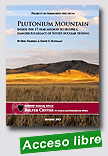 |
|
Extraído de:
http://belfercenter.ksg.harvard.edu/publication/23327/plutonium_mountain.html?
breadcrumb=%2Fpublication%2Fby_type%2Freport
|
 |
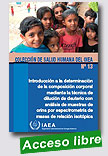 |
Introducción a la Determinación de la Composición Corporal Mediante la Técnica de Dilución de Deuterio cón Análisis de Muestras de Orina por Espectometría de Masa de Relación Isotópica
Colección de Salud Humana del OIEA, 2013, 87 p.
Esta publicación fue elaborada por un grupo internacional de expertos con ánimo de ofrecer una guía práctica y concreta sobre el uso de la técnica de dilución de deuterio en contextos en que vaya a emplearse la espectrometría de masas de relación isotópica (IRMS, por sus siglas en inglés) para analizar las proporciones de isótopos estables en muestras biológicas.
|
Extraído de:
http://www-pub.iaea.org/MTCD/Publications/PDF/Pub1451s_web.pdf
|
 |
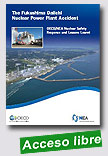 |
The Fukushima Daiichi Nuclear Power Plant Accident: OECD/NEA Nuclear Safety Response and Lessons Learnt
Nuclear Energy Agency (NEA), 2013, 68 p.
This report outlines international efforts to strengthen nuclear regulation, safety, research and radiological protection in the post-Fukushima context. It also highlights key messages and lessons learnt, notably as related to assurance of safety, shared responsibilities, human and organisational factors, defence-in-depth, stakeholder engagement, crisis communication and emergency preparedness.
|
Extraído de: http://www.oecd-nea.org/pub/2013/7161-fukushima2013.pdf
|
 |
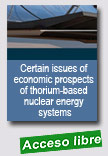
|
Certain issues of economic prospects of thorium-based nuclear energy systems
Bellona Foundation, 23/04/13, 23 p.
Thorium-based nuclear fuel is thought to play a variety of roles depending on a particular nuclear energy system, which makes it challenging to form judgments regarding the economic prospects of thorium. |
Extraído de: http://www.bellona.org/reports/1366722071.4
|
 |
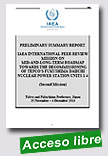 |
Preliminary Summary Report - IAEA International Peer Review Mission on Mid-and-long-term Roadmap Towards the Decommissioning of TEPCO’s Fukushima Daiichi Nuclear Power Stations Units 1-4
IAEA, 4 December 2013, 14 p.
Following the accident at TEPCO’s Fukushima Daiichi Nuclear Power Station on 11 March 2011, the “Mid-and-Long-Term Roadmap towards the Decommissioning of TEPCO’s Fukushima Daiichi Nuclear Power Station Units 1-4”
|
(hereinafter referred to the “Roadmap”) was adopted by the
Government of Japan and the TEPCO Council on Mid-to-Long-Term Response for Decommissioning in December 2011. The Roadmap was revised in July 2012 and June 2013. The Roadmap includes a description of the main steps and activities to be implemented for the decommissioning of the Fukushima Daiichi NPS through the combined effort of the Government of Japan and TEPCO. Within the framework of the IAEA Action Plan on Nuclear Safety, the Government of Japan invited the IAEA to conduct an independent peer review of the Roadmap with two main objectives: To improve the decommissioning planning and the implementation of pre-decommissioning activities at TEPCO's Fukushima Daiichi NPS; and To share the good practices and lessons learned by the review with the international community.
The review was organized in two steps. The first mission was conducted from15 to 22 April 2013 with the main purpose of undertaking an initial review of the Roadmap, including assessments of decommissioning strategy, planning and timing of decommissioning phases and a review of several specific short-term issues and recent challenges. The mission report is available on the IAEA webpage (http://www.iaea.org/newscenter/focus/fukushima/missionreport230513.pdf).
After the first mission, the Government of Japan and TEPCO took into consideration the advice given through the aforesaid mission report in the course of revising the Roadmap. The revised Roadmap, “Mid-and-Long-Term Roadmap towards the Decommissioning of TEPCO’s Fukushima Daiichi Nuclear Power Station Units 1-4 revised 27 June 2013” is available on the Ministry for Economy, Trade and Industry (METI) website (http://www.meti.go.jp/english/press/2013/pdf/0627_01.pdf).
The objective of the second mission was a more detailed and holistic review of the revised Roadmap and mid-term challenges, including the review of specific topics agreed and defined in the first mission. These included the removal of spent fuel from storage pools, removal of fuel debris from the reactors, management of contaminated water, management and monitoring of marine water, management of radioactive waste, maintenance and enhancement of stability and reliability of structures, systems and components, and research and development relevant to pre-decommissioning and decommissioning activities.
Extraído de:
http://www.iaea.org/newscenter/focus/fukushima/missionreport041213.pdf
|
 |
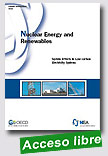 |
Nuclear Energy and Renewables – System Effects in Low-carbon Electricity Systems
Nuclear Energy Agency (NEA), 2012, 255 p.
This report addresses the increasingly important interactions of variable renewables and dispatchable energy technologies, such as nuclear power, in terms of their effects on electricity systems. These effects add costs to the production of electricity, which are not usually transparent. The report recommends that decision-makers should take into account such system costs and
|
internalise them according to a “generator pays” principle, which is currently not the case. Analysing data from six OECD/NEA countries, the study finds that including the system costs of variable renewables at the level of the electricity grid increases the total costs of electricity supply by up to one-third, depending on technology, country and penetration levels. In addition, it concludes that, unless the current market subsidies for renewables are altered, dispatchable technologies will increasingly not be replaced as they reach their end of life and consequently security of supply will suffer. This implies that significant changes in management and cost allocation will be needed to generate the flexibility required for an economically viable coexistence of nuclear energy and renewables in increasingly decarbonised electricity systems.
Executive summary
Extraído de: http://www.oecdnea.org/tools/publication?query=&div=&lang=&
period=6m&sort=title&filter=1#p7066
|
 |
|
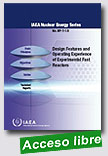
|
Design Features and Operating Experience of Experimental Fast Reactors
IAEA Nuclear Energy Series, 2013, 128 p.
Growing energy needs and concern for the environment drive the demand for large scale and low impact energy sources. Therefore, national and international research on fast reactor technology is increasing. As a part of the IAEA efforts for knowledge preservation and data retrieval, this publication compiles and documents significant aspects of fast reactor engineering development and experience. Its focus is on
|
research and developing activities, experience with experimental facilities and properties, and criteria for comparison and choice of liquid metal coolants. The introductory part includes the history, the state of the art and an overview of fast reactor cooling, heat transport and heat conversion systems development. This is followed by basic information on liquid metal coolants and design features. The publication concludes with a summary which identifies the progress achieved and issues to be resolved in sodium and heavy metal coolant technology.
Extraído de:
http://www-pub.iaea.org/books/IAEABooks/8493/Design-Features-and-Operating-Experience-of-Experimental-Fast-Reactors
|
| |
|
|
| |
| |
|
|
|
| |
|
|
|
| |
|
|
|
| |
|
|
|
|
|
